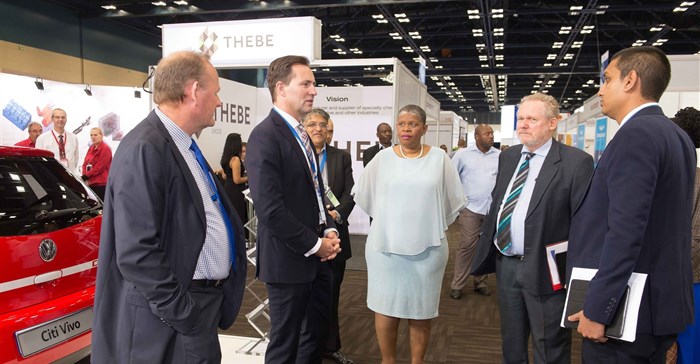NAACAM president, Dave Coffey, said the stated acceptance by industry role-players of the need to increase local content in manufactured vehicles from its current level of 38.5% to 60%, was significant.
Automotive Masterplan lead, Dr Justin Barnes, said the achievement of a 60% level of localisation would make a significant impact on the South African economy, including the creation of 49,000 new jobs and an additional R68bn in GDP.
Barnes said the Automotive Masterplan and associated policy levers, which would replace the Automotive Production Development Plan in 2020, was at an "advanced stage of development" and that more concrete details would be shared over the coming weeks.
Government’s ‘significant support’
Speaking at the show, trade and industry minister Rob Davies reaffirmed government's 'significant support' for the automotive sector and said learnings which informed the policy "were not based on countries that have abandoned support of the auto sector.''
"I was really pleased to see a vast array of component suppliers at the show, showing the depth and breadth of the supply chain, including black industrialists, a number of whom have entered the space with support from OEMs and large Tier Ones,” he said.
Davies said any beneficiary of future automotive policies would need to demonstrate a contribution to black-supplier development and localisation which was "central to dealing with stubbornly high unemployment levels."
Gained alignment
Toyota SA president and Naamsa representative, Andrew Kirby, said he was "encouraged that we have gained alignment in the overall picture of the Masterplan and the acceptance of its key targets for the sector."
NUMSA Secretary General Irvin Jim said the industry faced "serious challenges and business and social movements and had to develop the agenda to address these together. Otherwise, we will have no one else to blame.''
Reflecting on feedback from 13 conference sessions attended by up to 500 automotive executives and policy makers, Coffey said so much was learned and while there are always different positions, platforms such as these help sector participants find each other.
"Members of the South African automotive sector value chain, are clear that the key long-term outcomes of sector growth, increased localisation and transformation are inextricably linked.”
"All South African automotive role-players understand that transformation and the inclusion of black-owned suppliers in the value chain is not negotiable. There is a renewed sense of urgency and move to action, in this regard, which is significant.'' Coffey said.
Deepen levels of local content
"Given the fact that approximately triple the number of jobs are created in component manufacturing than vehicle assembly, there is commitment across the board to deepen levels of local content. This responsibility falls as much with Tier 1 component manufacturers as it does with OEMs.''
Said NAACAM executive director Renai Moothilal: "In addition to the profiling, over 140 meetings were set-up between suppliers and buyers as part of the Durban Automotive Cluster's National Localisation Indaba, which aimed to facilitate local contracts for products mainly being imported into South Africa.''






























